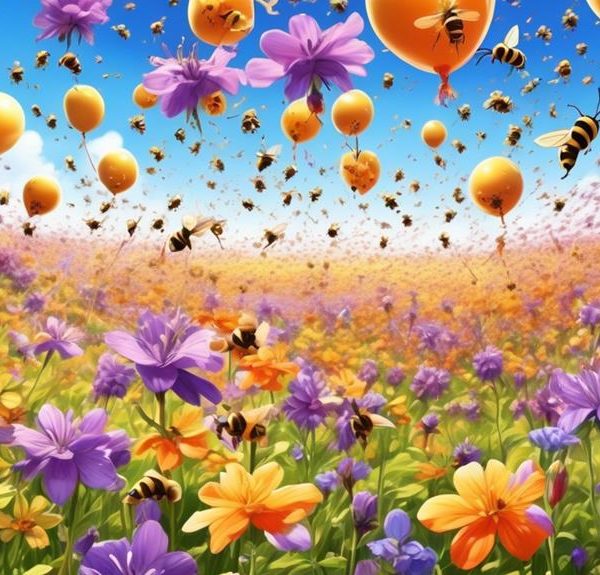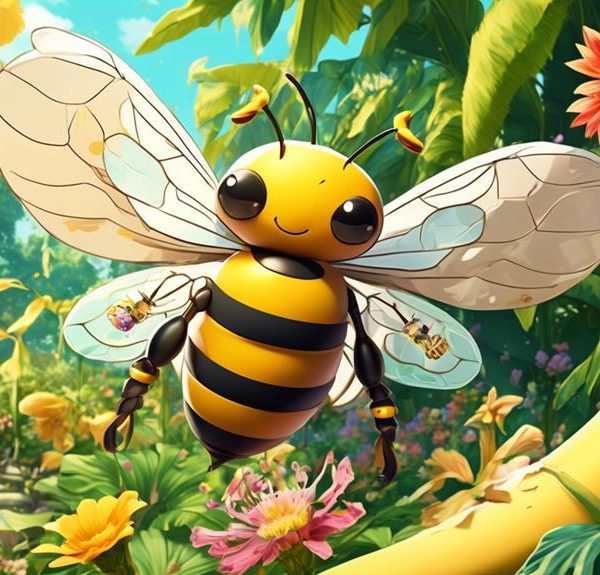Know how bees interact with bamboo? Dive in to uncover this intriguing relationship that's not as simple as you might think.
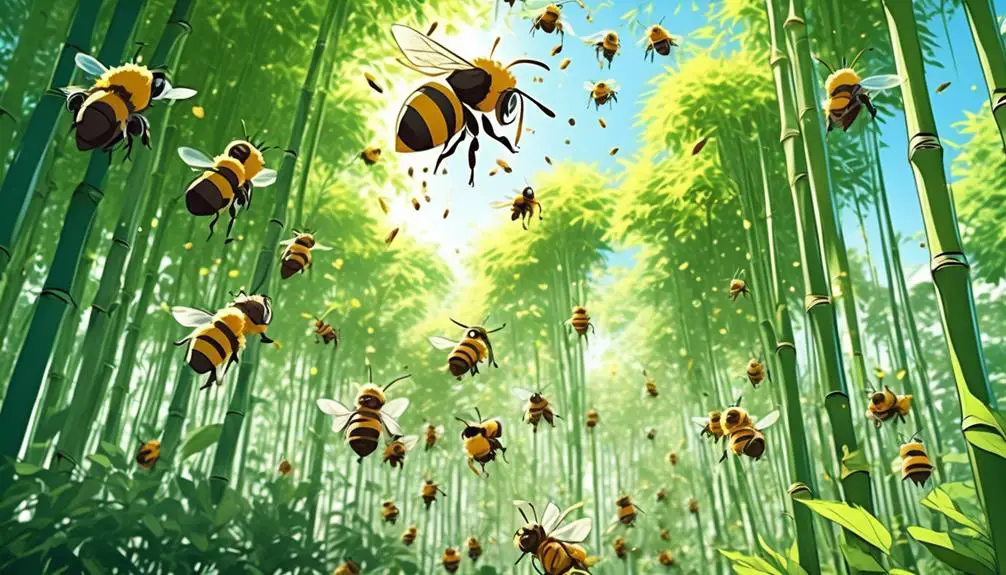
Do Bees Like Bamboo
Did you know that over 20,000 different species of bees exist worldwide? As you consider this staggering number, you might wonder about the diverse range of plants these bees are drawn to. One such plant that might pique your curiosity is bamboo.
Now, you may be asking yourself if bees like bamboo, it's a valid question, after all. Well, the answer isn't as straightforward as you might think, and the relationship between bees and bamboo is quite intriguing.
So, why not stick around to uncover this fascinating interaction?
Key Takeaways
- Bees are attracted to bamboo due to its long-term food source of pollen and nectar.
- Bamboo provides nesting sites for solitary bees, aiding in bee conservation efforts.
- Bamboo's rapid growth can have both positive and negative impacts on bee populations, depending on the species and habitat.
- The relationship between bees and bamboo is mutually beneficial, with bamboo playing a crucial role in bee conservation by providing resources and habitat.
Understanding Bees' Preferences
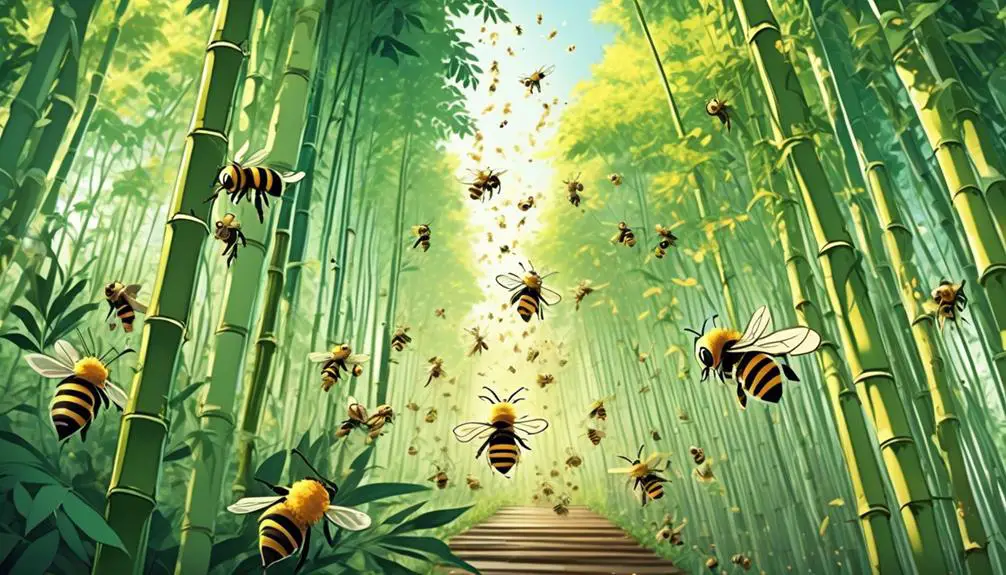
To fully grasp why bees may or may not be attracted to bamboo, it's crucial to first understand their preferences and what factors influence their choice of plants. You see, bees don't just randomly select plants. They're rather particular about their choices, driven by specific needs.
Bees primarily seek two things from plants: nectar and pollen. Nectar, a sugary liquid, provides them with energy, while pollen is a protein source necessary for their offspring's development. Therefore, they're drawn to plants that are rich in these resources. It's also important to mention that bees have excellent color vision. They're particularly attracted to bright, vivid colors such as yellow, blue, and purple.
The scent of a plant is another crucial factor. Bees have a highly developed sense of smell, which they use to locate flowers bursting with nectar and pollen. They're more likely to be attracted to plants with a strong, sweet fragrance. The shape of the flower also matters. Bees prefer flowers with a landing platform where they can rest while foraging.
Knowing these preferences can help you understand bees' potential interest in bamboo.
The Attraction Between Bees and Bamboo

Delving into the allure of bamboo for bees, it's evident that this woody plant holds certain traits that can be immensely appealing to these industrious insects.
Bamboo, particularly when it's flowering, can provide a rich source of pollen and nectar, essential food for bees. When the bamboo flowers, they're in full bloom for a considerable period, providing a steady, long-term food source.
Moreover, the structure of bamboo plants also attracts bees. The hollow stems of dead or dying bamboo can serve as ideal nesting sites for solitary bees. These bees don't form colonies like honeybees or bumblebees; instead, they seek out individual nesting sites, and the bamboo's hollow canes perfectly fit the bill.
Additionally, bamboo's rapid growth rate ensures a relatively constant availability of these resources. This means that a bamboo grove can support a sizeable bee population, contributing to local biodiversity.
Impact of Bamboo on Bee Populations
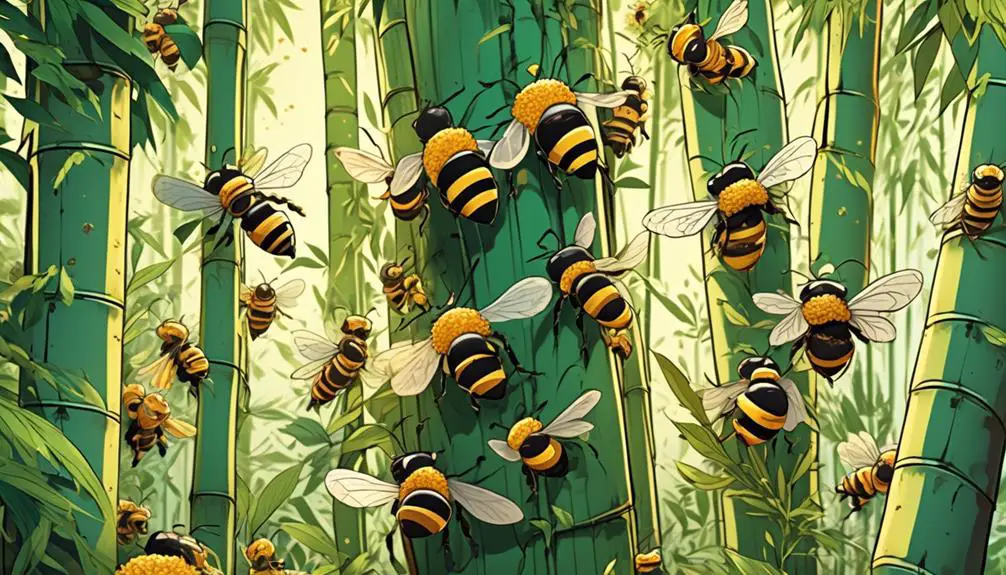
You may not realize it, but the seemingly ubiquitous presence of bamboo can significantly influence local bee populations. The sway of bamboo in the wind provides a beacon for bees, which often seek out these tall grasses as a source of nectar. This can have a profound impact, particularly on native bee species, by providing a reliable and plentiful food source.
However, the relationship between bees and bamboo isn't always positive. Some non-native bamboo species can outcompete local flora, reducing biodiversity and potentially limiting the variety of pollen and nectar sources available to bees.
Additionally, the rapid growth rate of bamboo can alter the local habitat, which could disrupt existing bee populations. In extreme cases, the spread of bamboo can even contribute to the displacement of native bee species.
Interestingly, bamboo can also play a role in bee conservation. Certain species of bamboo have hollow stems, providing natural cavities for solitary bees to nest in. This could help bolster bee populations, particularly in urban areas where natural nesting sites are scarce. Exploring this further could open up new avenues for bee conservation efforts.
Role of Bamboo in Bee Conservation
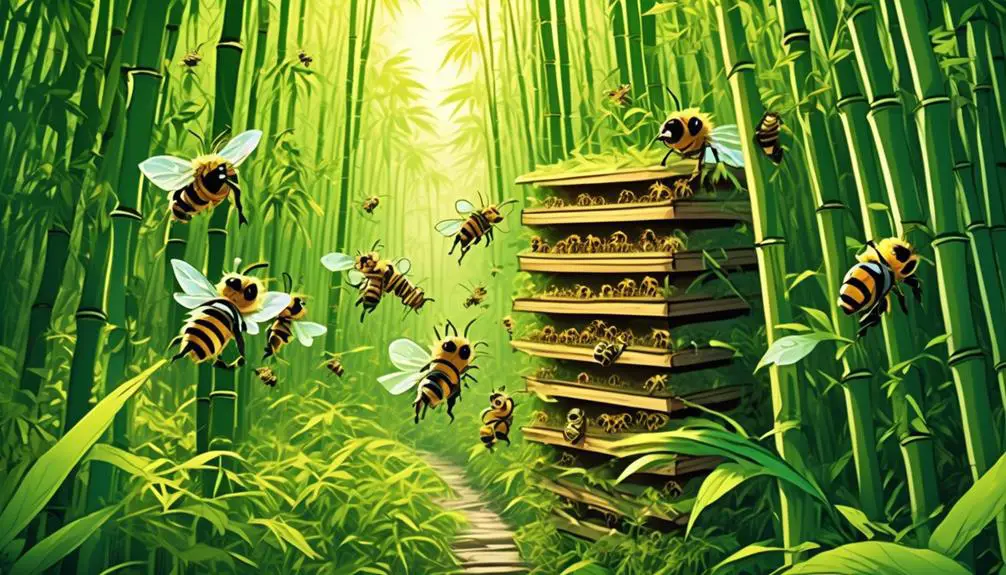
In the midst of urban environments, where natural habitats for bees are dwindling, bamboo's role in bee conservation emerges as both significant and promising. Bamboo, with its hollow stems and diverse species, provides a myriad of nesting possibilities for solitary bees. These bees, unlike their hive-dwelling counterparts, don't produce honey but are critical for plant pollination.
You might be surprised to learn that bamboo can bloom and provide nectar for bees. Although the blooming period varies greatly from species to species, some even taking decades, when it does occur, it's a veritable feast for bees.
Moreover, bamboo's fast growth rate and ability to thrive in various climates make it a sustainable option for bee habitats. By incorporating bamboo into your garden, you're not only adding an attractive feature, but also supporting bee conservation.
Case Studies: Bees and Bamboo Interactions
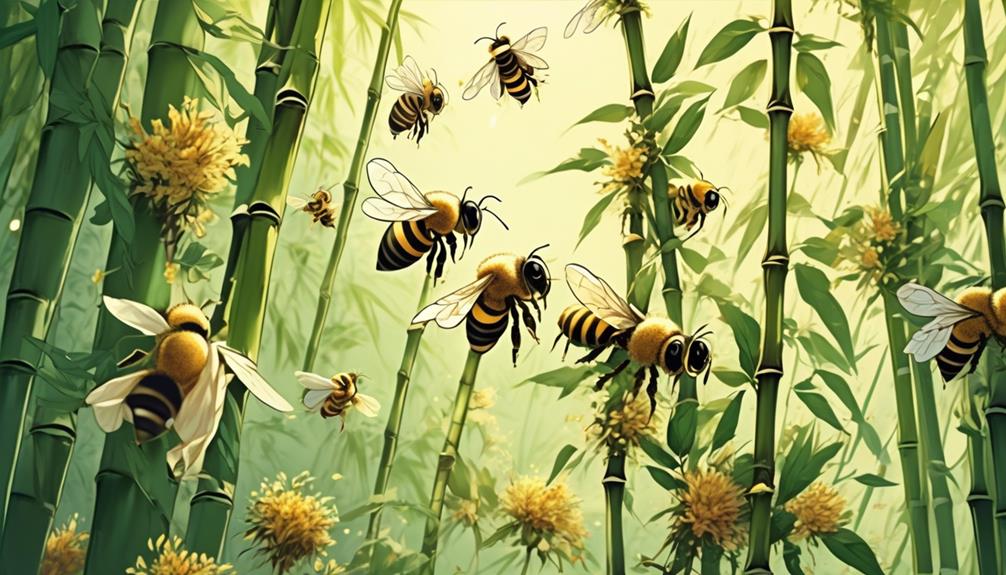
Building on the concept of bamboo's role in bee conservation, let's examine some real-world examples of how bees and bamboo interact.
In China, for instance, the local bee species Apis cerana is often spotted frequenting bamboo forests. This species is particularly adept at collecting nectar and pollen from bamboo, demonstrating an intriguing ecological relationship that has evolved over time.
Similarly, researchers in Brazil have noted the stingless bee Melipona bicolor's affinity for bamboo. They've observed that these bees often choose bamboo stalks as nesting sites, suggesting bamboo's structural features like hollow stems and high growth may provide an attractive habitat.
In Uganda, a fascinating case study reveals a mutualistic relationship between bamboo and African honeybees. Not only do these bees gather resources from bamboo, but they also play a crucial role in bamboo pollination, aiding in its propagation.
In Japan, an interesting phenomenon involves the Japanese honeybee and the bamboo plant. During harsh winters, bees are seen to take refuge in the hollow sections of bamboo plants, utilizing them as a form of shelter against harsh weather conditions.
These case studies illustrate the dynamic and mutually beneficial relationship between bamboo and bees, highlighting bamboo's potential role in bee conservation efforts globally.
Frequently Asked Questions
What Other Plant Species Are Preferred by Bees Apart From Bamboo?
You're curious about what other plants bees prefer, aren't you?
Well, bees are particularly fond of plants that produce abundant nectar and pollen. Some favorites include sunflowers, lavender, and rosemary. They're also attracted to fruit trees like apple or cherry.
In your garden, consider planting herbs like thyme and sage. Bees just can't resist these plants!
Are There Specific Types of Bamboo That Bees Are More Attracted To?
You're interested in whether certain types of bamboo are more appealing to bees.
While bees aren't typically attracted to bamboo as it doesn't produce nectar, some species like the Giant Timber Bamboo do flower and can attract bees.
It's not the bamboo itself, but the flowers they produce that bees find enticing.
How Does the Climate or Region Affect the Relationship Between Bees and Bamboo?
You're asking how regional climate affects the interaction between bees and certain plants.
Well, climate plays a significant role. Bees are more likely to visit plants in warmer and sunnier conditions, including bamboo. However, not all bamboo species thrive in all climates, and the bees local to a region may have preferences.
For instance, bamboo varieties that flower more often in temperate climates might attract more bees than those in colder regions.
Can Bamboo Negatively Affect the Health or Lifespan of Bees?
There's no concrete evidence to suggest that bamboo can negatively impact the health or lifespan of bees. It's generally accepted that bees aren't harmed by bamboo. In fact, they often use bamboo forests as a source of shelter.
However, if bees are solely relying on bamboo for nectar, it could limit their diet diversity, which might indirectly affect their health. But typically, bees thrive in diverse environments and won't solely depend on bamboo.
What Can Be Done to Enhance the Attraction of Bees Towards Bamboo in a Garden Setting?
To enhance the attraction of bees towards bamboo in your garden, you'd want to incorporate a diverse array of flowering plants. Bees are drawn to bright colors and sweet nectar. Therefore, planting flowers among your bamboo can increase its appeal.
Also, you could install bee-friendly features like shallow water dishes and bee hotels. Remember, it's vital to avoid pesticides, as they can harm bees.
This will create a bee-friendly environment around your bamboo.
Conclusion
In conclusion, bees do indeed find bamboo attractive, mainly due to its plentiful nectar and pollen. Bamboo's impact on bee populations is largely positive, contributing to their conservation.
With various case studies supporting these interactions, it's clear that bamboo plays a crucial role in supporting bee populations.
So, if you're looking to help our busy bee friends, consider adding bamboo to your garden or local environment.

